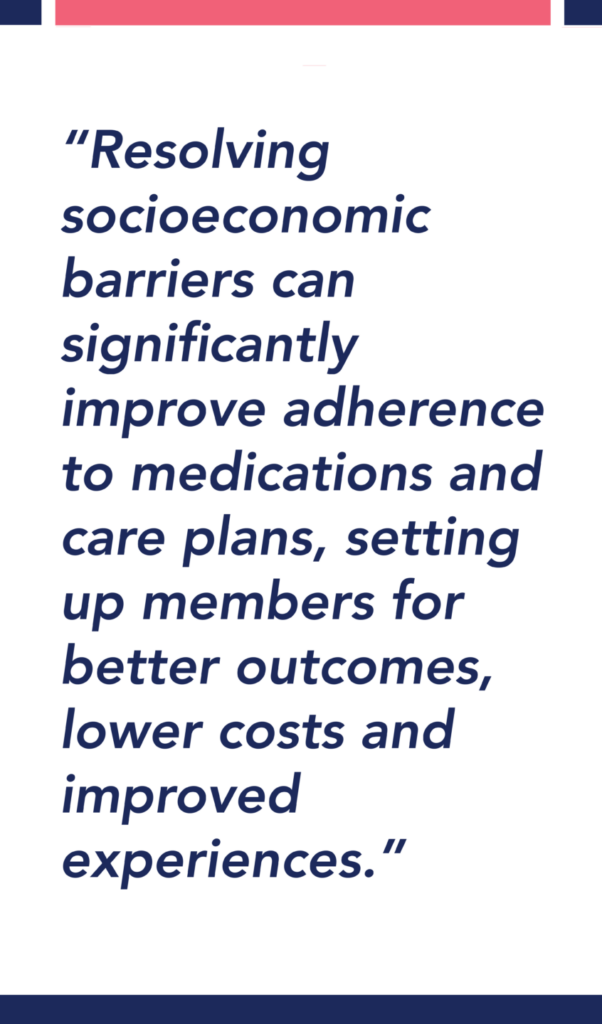Published on .
As the Medicare Advantage (MA) market continues to face more challenges, MA plans are met with the annual task that continues to grow in intensity: achieving at least a 4.0-Star rating on the critical Star Ratings scale.
The 4.0-Star threshold opens up a number of important benefits—most notably, access to the nearly $13 billion in the Quality Bonus Program (QBP) shared between the highest performers on clinical quality, health outcomes and member satisfaction.
Crossing the 4.0-Star barrier—and maintaining a top rating over time—isn’t always easy, especially as the member pool gets older with worsened health, and CMS continues to adjust the requirements for making the grade.
For example, CMS is emphasizing the important role of the social determinants of health (SDOH) in MA member outcomes with the new Health Equity Index (HEI) and a new Social Needs Screening and Intervention (SNS-E) measures, designed to challenge health plans to identify and address certain defined risks for qualifying individuals in a structured, coordinated manner. Historically, there has been no national health plan measure to identify and assess members’ social needs, so these measures will help address that gap.
Plans that want to become or stay eligible for QBP incentives will need to be proactive about getting to know their higher-risk populations and becoming experts at applying the right tools and strategies, including social needs screenings and medication adherence programming, to resolve SDOH-related issues at scale.
What is the HEI measure and who will it impact?
The HEI measure was finalized in April of 2023. It is designed to reward MA plans for improving care in specific areas, for contracts that have higher percentages of members with specific social risk factors (SRFs). These include beneficiaries who receive a low-income subsidy (LIS), those who are dual-eligible (DE) and those who are disabled. The goal is to reduce inequity and close the gaps in health disparities that often impact these populations.
The first calculation of the index will be based on two years of data, starting with calendar years 2024 and 2025, even though the new system isn’t going into full effect until measurement year 2027. The HEI measure will be calculated from existing Star Rating measures, with included measures to be announced annually.
MA plans will be divided into thirds based on their performance: plans in the top third on a given measure will get one point, while plans in the middle get zero and those in the bottom third get a negative point. CMS will then aggregate the scores across measures to create a weighted overall score, which will be applied to the Star Ratings calculations. Plans must have a total score greater than zero to qualify for any reward.
Importantly, the HEI measure will replace the existing reward factor for many plans, particularly dual-eligible, special needs plans (D-SNPs) that primarily serve individuals with complex clinical and socioeconomic challenges.
The switch means D-SNP plans that have secured QBPs in the past might not be guaranteed the same incentives in the future, and non–D-SNP plans that wish to qualify for the HEI will have to take a much closer look at how they identify and manage their members with SRFs.
What is the Social Needs Screening and Intervention (SNS-E) measure?
CMS is pairing the HEI with a new HEDIS measure to better quantify how MA plans are addressing socioeconomic needs. SNS-E was a display measure in 2023 but will start to count in measurement year 2024.

Measurement of active non-clinical interventions is the strongest indicator yet that health plans must move beyond the traditional, transactional definition of a healthcare services payor. Instead, they must truly understand and actionably address non-clinical factors that play such a crucial role in determining overall health outcomes and quality of life for members.
While plans initially might balk at the SNS-E as just another administrative task to complete, it can actually become a very powerful tool for making the transition to a proactive, holistic care partner for members in need.
Conducting standardized risk screenings, and collecting this data electronically, can give MA plans much-needed insight into their higher-risk cohorts, plus jumpstart performance on the HEI measure, which may in turn lead to higher Stars performance, enhanced revenue, better member retention and lucrative QBP incentives.
Best practices for excelling with HEI and SNS-E requirements
To take action on health equity and get ahead of the HEI and SNS-E requirements, MA plans need to develop workflows that support the identification of populations in need, encourage the collection of relevant SRF data and allow for speedy, high-impact interventions.
These activities should be geared toward developing a holistic portrait of each member, with a particular focus on SDOH-based adherence barriers that may prevent access and correct usage of medications (a hugely significant “force multiplier” for Stars success), as well as appropriate access to primary and specialty care services.
Harnessing the power of multisource data
There are two main ways to gather relevant information on members:
- Through pre-existing data sources like claims and clinical data and
- By collecting insights directly from individuals. Both are crucial to develop a full, “whole person” understanding of the member and their concerns, but starting with available data from administrative and clinical sources helps MA plans best target their resources and identify the need for enhanced outreach and additional actions.
MA plans must be able to analyze multiple types of data, including medical and pharmacy claims, to pinpoint potential gaps in care, such as unfilled prescriptions. Adding socioeconomic data like the CDC’s Social Vulnerability Index can further enrich insights by creating more visibility into a member’s community circumstances and likelihood of experiencing SRFs.
This type of data review can help plans create prioritized lists for outreach, which can then be shared with experienced staff, including pharmacy specialists, to conduct outreach and help resolve barriers to care, as well as collect information on key SNS-E items.
Connecting with members to gather personalized perspectives
Outreach to members struggling with socioeconomic barriers must be conducted with empathy, honesty and openness. Outreach staff must establish trust at the beginning of the relationship, which can be effectively accomplished by the use of motivational interviewing.
Motivational interviewing uses open-ended questions to invite members to share their experiences, needs, strengths and barriers in a safe and compassionate environment. This strategy allows outreach staff to collect information on SDOH concerns, including the data required for the SNS-E measure, as well as offer resources to help address issues.
Staff must be trained to meet members where they are in terms of health literacy, cultural and religious beliefs, intrinsic motivation, and problem-solving skills for resolving external SDOH barriers. Plans should employ technology tools that allow staff to easily record notes on these conversations—and recall those notes upon next contact—to reduce abrasion with members and support ongoing, informed relationships throughout the performance year.
Providing real-time assistance to address SDOH concerns
In addition to collecting data, plans need to act on what they learn. The ability to provide options quickly, in as few interactions as possible, is crucial for making headway with the HEI and SNS-E, especially among hard-to-reach populations that do not consistently engage with their plans or providers.
Community-based organizations are widely available to address transportation issues, food insecurity and unstable housing situations. Plans should consider adopting a technology platform that has built-in access to these resources via national efforts, such as FindHelp.org (formally known as Aunt Bertha).
Integrating referrals directly into the outreach and communication platform can streamline interventions and allow plans to keep organized records of their attempts to connect individuals with services. This will enable MA plans to maximize their performance on SNS-E and better understand how to continuously improve their health equity initiatives.
Building ongoing relationships to ensure long-term adherence

As a result, plans need to establish a regular cadence of touchpoints with high-risk members throughout the year to ensure they are maintaining access to their medications and other healthcare services.
Plans need access to tools that can create workflows that highlight the need for timely follow-ups and surface recommendations for the “next best action” to take with each individual member during the interaction. By maintain strong relationships with members over time, plans can build trust, ensure adherence and satisfy as many Star Ratings measures as possible during each performance period.
As regulators continue to prioritize—and incentivize—health equity in high-quality Medicare Advantage offerings, MA plans will need to get proactive and strategic about how they work with their socioeconomically vulnerable populations. A combination of analytics technology and effective outreach techniques can help plans score highly on the HEI and SNS-E measures, leading to higher Star Ratings performance and more opportunities to access financial rewards.
AdhereHealth provides the data-driven solutions that help MA plans address and resolve health disparities within the member population. To learn more and begin to build your SDOH strategy, contact us for a consultation.

Cyndi Alexander
AdhereHealth Chief Adherence Officer
